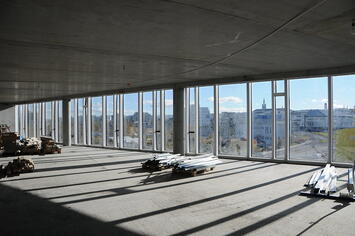
An on-line site called the Dumber, er, I mean Intelligancer says that, for cities to survive, developers must be allowed to convert office buildings into housing.
There are a lot of problems with this recommendation. First, both people and jobs are moving away from the cities, so who is going to want to live in former office buildings anyway? Second, office buildings are not designed for human habitation, so converting them will be expensive, probably far more expensive than the single-family homes people are moving to.
I don't have any problem with relaxing zoning to allow office-to-housing conversions. But because of these two issues, doing so isn't going to lead to any new housing. When that happens, you know what the next step will be: cities will begin subsidizing such conversions, leading to all sorts of gigantic boondoggles.
All of this is predicated on the idea that cities (meaning dense inner cities, the areas whose office buildings are currently half empty) as opposed to urban areas are somehow vital to society. They aren’t and haven’t been for a century. It is also predicated on the idea that planners know what cities need and can write zoning codes and create tax incentives and subsidies to provide that need.
In fact, urban planners are almost totally clueless about the cities they claim to be planning. They haven’t understood those cities for decades, instead trying to impose their personal preferences and 60-year-old “visions” on other people (even though most planners themselves prefer single-family homes).
I believe it was the architect Louis Kahn who once advised students, “Let the room be what it wants to be.” Planners should leave cities alone and let them be what they want to be. Someone will figure out a use for those office buildings. Though the owners of those buildings will probably be upset that they aren’t getting the rents they expected before the pandemic, that’s not a problem taxpayers should be required to remedy.
This piece first appeared at The Antiplanner.
Randal O'Toole, the Antiplanner, is a policy analyst with nearly 50 years of experience reviewing transportation and land-use plans and the author of The Best-Laid Plans: How Government Planning Harms Your Quality of Life, Your Pocketbook, and Your Future.
Photo: Tomi Knuutila via Flickr under CC 2.0 License













Allowing Cities to be what they want
What a concept! Allowing a city to build on their strengths instead of forcing the city to be something it's not intended to be. When I started in the planning industry in 1968 - it was never about social engineering. If people wanted a single family home on a lot they moved to the suburbs and if they wanted (god forbid) an acre or more they moved even further out. Cities thus formed by demographics in a way. But it was the 1960's and people who moved further and further out to get their dream setting back then were overwhelmingly 'white'. It ain't the 1960's thankfully, and successful people of all races can achieve their dream setting and move to cities that intentionally become less dense. But planning today is not about great design, but instead having a planner or an architect tell us how to live, and force feeding density as if 'density' is the only avenue to affordability. Today, 'planners' - especially those targeting more urban areas want to turn suburbia into something else, as if space was some form of disease. Many of these are architects wearing the 'planner' hat. These people's agenda is to convince others that there needs to be high density or reuse an existing large structure to a different use. Why so much pressure? That new $100 million construction cost of the 'town center' will bring in $10 million in 'architectural' fees, or that reuse of an office building to reconstruct it to residential might cost $20 million (as an example) providing a $2 million design fee. Perhaps that's the real ugly truth behind this push and agenda. Just putting that thought out there as a designer and planner myself. Follow the money.
In the end Cities should be what they want to be. High density - great. Low density - great.